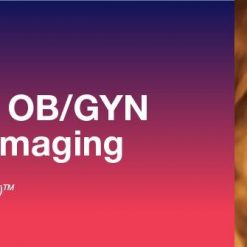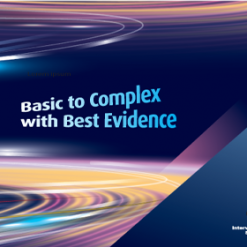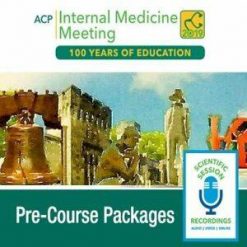-
×
 2019 Classic Lectures in Body Imaging with CT
1 × $40
2019 Classic Lectures in Body Imaging with CT
1 × $40 -
×
 2019 Classic Lectures in Musculoskeletal Imaging What You Need to Know
1 × $40
2019 Classic Lectures in Musculoskeletal Imaging What You Need to Know
1 × $40 -
×
 ARRS Ultrasound: Core and Emerging Techniques and Concepts 2021
1 × $125
ARRS Ultrasound: Core and Emerging Techniques and Concepts 2021
1 × $125 -
×
 2019 Association for Community Health Improvement (ACHI) National Conference
1 × $30
2019 Association for Community Health Improvement (ACHI) National Conference
1 × $30 -
×
 The Brigham Board Review in Pulmonary Medicine 2020
1 × $50
The Brigham Board Review in Pulmonary Medicine 2020
1 × $50 -
×
 USCAP A Contemporary Approach and Update on the Classification, Grading, Staging and Reporting of GU Tumors 2021
1 × $70
USCAP A Contemporary Approach and Update on the Classification, Grading, Staging and Reporting of GU Tumors 2021
1 × $70 -
×
 MedQuest : Medicine Clerkship High-Yield Video Series 2020 (Videos)
1 × $45
MedQuest : Medicine Clerkship High-Yield Video Series 2020 (Videos)
1 × $45 -
×
 ASE Scientific Sessions 2020
1 × $70
ASE Scientific Sessions 2020
1 × $70 -
×
 2017 imaging of frequently under recognized seronegative spondyloarthritis
1 × $30
2017 imaging of frequently under recognized seronegative spondyloarthritis
1 × $30 -
×
 2019 Magnetic Resonance Imaging National Symposium
1 × $40
2019 Magnetic Resonance Imaging National Symposium
1 × $40 -
×
 Dermatology, 4th Edition, Bolognia (Videos, Well Organized)
1 × $10
Dermatology, 4th Edition, Bolognia (Videos, Well Organized)
1 × $10 -
×
 2019 Advances in OB/GYN Ultrasound Imaging
1 × $40
2019 Advances in OB/GYN Ultrasound Imaging
1 × $40 -
×
 2020 Transplant Hepatology Board Review Course
1 × $80
2020 Transplant Hepatology Board Review Course
1 × $80 -
×
 AIUM practice parameter for the performance of ultrasound examination in the practice of urology
1 × $20
AIUM practice parameter for the performance of ultrasound examination in the practice of urology
1 × $20 -
×
 10-Volume Toriumi Rhinoplasty Video Library
1 × $75
10-Volume Toriumi Rhinoplasty Video Library
1 × $75 -
×
 ARRS Venous Disease: Exploration of Advances, Challenges, and Future Directions 2021
1 × $40
ARRS Venous Disease: Exploration of Advances, Challenges, and Future Directions 2021
1 × $40 -
×
 ARRS Crossroads of Computational Science and Musculoskeletal Imaging: Where Machine Magic Can Aid Radiologists 2021
1 × $40
ARRS Crossroads of Computational Science and Musculoskeletal Imaging: Where Machine Magic Can Aid Radiologists 2021
1 × $40 -
×
 MKSAP 18 Audio Companion (Part A + B)
1 × $40
MKSAP 18 Audio Companion (Part A + B)
1 × $40 -
×
 ACP Hospital Medicine Package (2019)
1 × $40
ACP Hospital Medicine Package (2019)
1 × $40 -
×
 2019 Classic Lectures in Pathology What You Need to Know Soft Tissue Pathology
1 × $40
2019 Classic Lectures in Pathology What You Need to Know Soft Tissue Pathology
1 × $40 -
×
 South East Asia Interventional Cardiology Symposium 2021 (Videos)
1 × $15
South East Asia Interventional Cardiology Symposium 2021 (Videos)
1 × $15 -
×
 ARRS Web Lectures: Pediatric Radiology: Kids Are Not Just Little Adults 2019
1 × $20
ARRS Web Lectures: Pediatric Radiology: Kids Are Not Just Little Adults 2019
1 × $20 -
×
 18th Annual Penn Neurology Board Review Course 2021
1 × $50
18th Annual Penn Neurology Board Review Course 2021
1 × $50 -
×
 Campbell Walsh Wein Urology: 3-Volume Set, 12th Edition (Videos)
1 × $26
Campbell Walsh Wein Urology: 3-Volume Set, 12th Edition (Videos)
1 × $26 -
×
 2020 Mayo Clinic Teach the Teachers Elbow Course – Forging the Future
1 × $25
2020 Mayo Clinic Teach the Teachers Elbow Course – Forging the Future
1 × $25 -
×
 Advanced Trauma Management for the Emergency Physician 2022
1 × $45
Advanced Trauma Management for the Emergency Physician 2022
1 × $45
Learning how to interpret ECGs is very similar! You can’t learn 12 lead ECG interpretation from a book. There are some fine details that are so subtle that you need a coach. You need to learn in steps.
CME4LIFE’s Black Belt ECG program is a solution for those who need to learn 12 lead ECG interpretation for clinical application. We’ve taught ECG interpretation to thousands of providers and our curriculum is the most efficient and useful system to learn ECGs.
Earn your black belt today!
Contents:
Black Belt ECG is a 6 video program that will teach you the following and more!
Video 1 – White Belt
- Discuss the sympathetic nervous system, “Staying Alive” response, and the differences between inotropes and chronotropes.
- Parasympathetic nervous system and the role of the Vagus nerve (“Leash on dog”). How does atropine work and anticholinergic side effects?
- What are the antiarrhythmic drugs? Vaughan William’s Classification of antiarrhythmic drugs. How do tricyclic antidepressants work? Amiodarone and the toxicities
- Risk Factor assessment – 3 causes of JVD – Difference between a simple and tension pneumothorax – Anatomy of the Heart
Video 2 – Yellow Belt
- Why do we put a patient on a monitor? Difference between Unsynchronized and Synchronized shock – “R on T” phenomenon. When do we shock?
- RR, PP, QQ System: How to calculate heart rate-Six-second method vs. Three-some method
- QRS complex: Why is the QRS complex wide? Description of the mnemonic CVS – Description of the Bundle Branch Block Man Method – Is this V-tach patient alive or dead? Difference between V-tach and VFib – Hyperkalemia on ECG.
- What is the QT interval?
Video 3 – Green Belt
- Introduction to sinus tachycardia/bradycardia – Causes of tachycardia: Discussion on mnemonic PHAT HADES – Treat the causes of tachycardia – Importance of vital signs and asking important questions – First encounter with mnemonic HORID.
- Why are HGB & HCT important? Who’s at risk of acute bleeding and what to do? Discussion on Trendelenburg position – How to take orthostatic vital signs and their importance
- How to diagnose ventricular hypertrophy – The importance of the R & S wave on ECG – Sokolow Index as it relates to left ventricular hypertrophy – Discussion on the 3 criteria of right ventricle hypertrophy
- The importance of addressing potassium – Causes of metabolic acidosis with the mnemonic KUSSMAL – ECG changes with hyperkalemia – How to treat hyperkalemia and the methods of lowering potassium
Video 4 – Blue Belt
- Causes of AFib – 3 caveats to diagnosing AFib – How do emboli relate to AFib – Treatment of AFib – Discussion on the CHADS2 Score.
- How to diagnose SVT – Treatment of SVT – Role of adenosine
- Steps of ACLS: 3 reasons for no pulse – What 2 mechanisms save lives? How to do CPR – Discussion of the mnemonic PAL – Pyramid of the causes of PEA and the description of the mnemonic HEAD – Common reversal agents – How to confirm asystole – How to fix a lethal arrhythmia
- Second discussion of where the heart blocks are located and the vagus nerve – Heart blocks are defined by the PR interval – 3 ways to deliver energy to a patient with a heart block – Heart blocks on ECG
Video 5 – Red Belt
- When should you order a 12 lead ECG? Who is your PAPPA mnemonic – Discussion of HORID mnemonic – Approach to 12 lead ECG – How to confirm sinus rhythm – Discussion of John’s “Two-fer Rule” – Describe the contiguous leads – Visual presentation of the cardiac blood flow hand mnemonic
- Learn where to draw the isoelectric lines – What does a Q-wave represent? 4 clinical areas of a ECG
- Discussion of ST elevation and APPLE mnemonic: STEMI presentation – 3 criteria to diagnose a MI – STEMI vs. NSTEMI – Red flags of chest pain with mnemonic DRIVE – STEMI on ECG Discussion of chest pain pearls
- Discussion of inverted T-waves with SLIP mnemonic: Presentation of pulmonary embolism – What is S1Q3T3?
Video 6 – Black Belt
- John’s syncope rules – Discussion of PERC rules – Discussion of murmurs – Mnemonics to remember different murmurs: S=MIAS and AIMS=D – Buzz words for CHF
- How does a stroke present? Discuss how to diagnose a stroke – FLEAS mnemonic to help with stroke signs and symptoms
- 6 ECG findings that kill patients with syncope and HAPPY mnemonic – Discussion of obstructive cardiomyopathy – Why are prolonged QT waves bad? Discussion on WPW – Discussion on Brugada Syndrome
- What is Takotsubo cardiomyopathy and what does it look like on ECG? Pearls of Wellen’s sign – Discussion on De Winter’s T-waves











